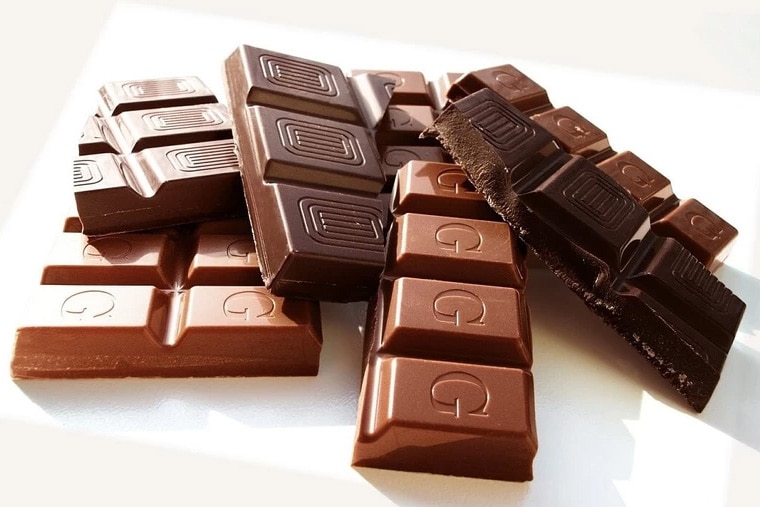Studies show that some factors we commonly consider a migraine trigger are probably the prodromal phase of migraine.
What exactly triggers a migraine attack?
Many of us have spent too much time pondering on the cause of any particular attack – was it because of stress at work? A poor night’s sleep? A glass of wine? Too much dairy? Too much sugar? Too much coffee? Not enough coffee? Not enough water? Going on holiday? A colleague’s strong cologne? A change in the weather? Working out too hard? The endless cycle of questioning, wondering what we did or ate or drank (or what we didn’t) and whether we could have prevented it can be enough to bring on another attack.
But the most recent research on migraine triggers might bring some calm to this confusion. In a nutshell, many of the factors that we commonly consider triggers are likely to be part of the prodromal (or premonitory) phase of migraine. The prodromal phase is a period of time that can be hours to days before the onset of the migraine headache, when the brain is not functioning normally on many levels. During this time, people may experience a wide range of non-headache symptoms, including mood changes, fatigue, disturbed sleep patterns, difficulty concentrating, nausea, neck discomfit, stuffy or runny nose, thirst, food cravings, sensitivity to sound, odour and light, yawning and needing to pee a lot. The diversity of these symptoms reveal the magnitude of migraine’s effect on the brain – so many different brain regions and different brain chemicals are involved that it is not so surprising that we haven’t yet found a cure for this complex neurological condition.
How can prodromal symptoms be confused with triggers? Consider this study: 53 people with migraine were asked about what triggered their migraine attacks and what prodromal symptoms they experienced. They were then given a medication (nitroglycerin) to induce a migraine attack and recorded prodromal symptoms during this induced attack. (So much respect and admiration for these study participants who were willing to endure a migraine for the sake of science.) Those people who reported light as a trigger were significantly more likely to experience photophobia (light sensitivity) during the prodromal period; the same was true for sound triggers and prodromal sound sensitivity; skipping meals or food triggers and prodromal food cravings; stress and prodromal mood changes.
Other studies have exposed volunteers with migraine (legends) to putative triggers such as food, flickering lights, strenuous exercise but have not found convincing results – the triggers did not consistently provoke migraine symptoms. Importantly, studies that tested chocolate as a trigger (compared to a placebo, usually carob) concluded that chocolate did not induce migraine.
The final piece of evidence comes from studies that track triggers and actual migraine attacks using daily diaries in people with migraine disease. These have found that migraine attacks are not reliably associated with the commonly posited migraine triggers.
Some caveats. Most of these studies test triggers in isolation and find limited effects, but several triggers in combination may have the potential to cause a migraine attack. There are some factors that are known to be significant triggers, including hormones (associated with menstrual migraine), insomnia, fasting or skipping meals, and (at least occasionally) alcohol, any type of alcohol, not just red wine. Also, although studies haven’t found strong or causative relationships between many common triggers and migraine attacks at a ‘population’ level, because we are all unique, individuals may identify factors they find helpful to avoid.
Clinicians are now recommending against a ‘trigger avoidance’ approach because of the harm that can come from an unjustified focus on triggers (which aren’t actually triggering). They describe the negative impacts of taking an unnecessary and ineffective trigger avoidance approach – people with migraine feel blame and guilt for being unable to recognize or avoid their triggers; we feel anxiety and anticipate attacks when exposed to a ‘trigger’ and that fear may increase our perception of pain, if an attack occurs; we may develop a phobia of triggers; we may avoid things that can actually improve our quality of life (such as chocolate, travel, social events).
We all want to know what causes our migraine attacks, so we can try and prevent them. But so much of what causes a migraine attack is unknown. We circle back to the importance of a healthy lifestyle, with good food, sleep, exercise and regular routines central to maintaining our wellbeing. We may need medications to manage migraine attacks and strategies to reduce stress and keep our excitable migraine brains calm. But stressing over triggers and beating ourselves with doubts over what we’ve done wrong to deserve the latest attack are not going to help us. It’s kind of a relief. I’m going to eat my chocolate now without reservation.
References
- Karsan, N., Bose, P., Newman, J., & Goadsby, P. J. (2021). Are some patient-perceived migraine triggers simply early manifestations of the attack? Journal of Neurology, 268(5), 1885–1893. https://doi.org/10.1007/s00415-020-10344-1. One of the study authors is now a neurologist in Auckland – Dr Pyari Bose.
- Nowaczewska M, Wicinski M, Kazmierczak W, Kazmierczak H. To eat or not to eat: a review of the relationship between chocolate and migraines. Nutrients 2020; 12:60
- Karsan, N., & Goadsby, P. J. (2018). Biological insights from the premonitory symptoms of migraine. Nature Reviews Neurology, 14(12): 699–710. https://doi.org/10.1038/s41582-018-0098-4
- Casanova, A, Vives-Mestres, M, Donoghue, S, Mian, A, Martin, PR. (2022). An observational study of self-reported migraine triggers and prospective evaluation of the relationships with occurrence of attacks enabled by a smartphone application (App). Headache, 00; 1– 10. https://headachejournal.onlinelibrary.wiley.com/doi/abs/10.1111/head.14328
- Martinelli, D, Pocora, MM, De Icco, R, Putortì, A, Tassorelli, C. (2022). Triggers of migraine: where do we stand? Current Opinion in Neurology, 35(3); 360-366. doi: 10.1097/WCO.0000000000001065
- Hougaard A, Amin FM, Hauge AW, et al. Provocation of migraine with aura using natural trigger factors. Neurology 2013; 80:428–431.


